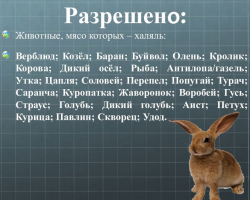Each human organ is important and necessary. In this article, you will find out why the pancreas is needed?
Content
Pancreas Refers to the most important organs of the digestive system, and the general condition of a person depends on its work, without exaggeration, because it is here that insulin was developing. What do you need to know about the pancreas in order not to miss the slightest signs of problems in its work?
Where is the pancreas?
- The place of direct location of the pancreas - abdomen. It is located in the area of \u200b\u200bthe first or second vertebrae belonging to the lumbar spine.
- Connected to the posterior wall of the stomach, to which is attached, and the retention of its necessary location in the cavity is ensured by the surrounding it duodenum.
- Iron itself consists of heads (its direction is the bile duct), bodies (is located behind the stomach (or rather, in its lower part) and tailwalking in the direction left hypochondrium. In general, you need to understand that the location of the pancreas is up to 10 cm above the navel.

Normal dimensions of the pancreas
Average pancreas Adults reaches 22-25 cm, while weighs until 80 g. Its width reaches 2.5 cm. As for the head and tail of the gland, they can reach 35 mm.
- These parameters are usually determined using ultrasound, which takes into account the clarity and evenness of the contours, the absence of formations.
- If the dimensions are slightly different, this may be due to age, as the pancreas decreases, but may indicate the beginning of a particular disease.
Functions and enzymes of the pancreas in the body
- Pancreas associated with digestive and endocrine systems of the body. In the first case, it produces enzymes that break down many fats (lipase), carbohydrates (amylase) and proteins (thripsin, chimotripsin) coming in the form of food. In the second - produces insulin.
- Enzymes are sent to the duodenum, being in an inactive form. If on the way of their follow occurs stone (for example, in the area of \u200b\u200bthe bile duct), blockage occurs, increased pressure in the pancreas and premature activation of enzymes. Thus, they begin to work already in the pancreas, destroying it.

- It leads to inflammation (pancreatitis) and insufficient production of enzymes and hormones, including insulin.
- The toxins that are released along with enzymes are able to enter the bloodstream and thus provoke a disease of the heart, liver, kidneys and even brain.
Possible pancreatic diseases: Description
- Pancreatitis or inflammation of the pancreas - A disease that gives rise to many other pancreatic diseases. It is characterized by acute severe pain in the upper abdomen, which gives in the back, the rally.
- These symptoms intensify When eating, manifestations of nausea or vomiting are also possible.
- Pancreatitis It may be sharp, in three manifestations. With a swelling, relatively light, the main attack lasts up to a week. With sterile pancrehenecrosis, cells are dying, and with infected, microorganisms penetrate into the pancreatic tissue, and toxic substances - toxic substances. This is fraught with serious consequences: thrombosis, renal or pulmonary failure, sepsis, etc.

- At chronic pancreatitis Irreversible changes in the gland and impaired its functions occur. It is characterized either by constant pain at the abdomen, or its attacks, especially after eating. The necessary enzymes and hormones are not sufficiently developed, which leads to new diseases, including diabetes.
- Doctors characterize this position as enzyme failure, which leads to a violation of the digestive process and to the fact that nutrients are poorly absorbed into the intestines. From here - manifestations of flatulence, diarrhea, bloating in the stomach. The feces become unformed, it often contains undigested food particles.
- Due to the fact that a sufficient amount of necessary substances does not enter the blood, may hypotrophotrophore muscles, the appearance of loose edema and the state of exhaustion, and a lack of vitamins, are possible leads to osteoporosis, problems with the condition of the hair and skin. A person becomes subject to infections, interruptions in cardiac activity are possible.

- The greatest the danger of pancreatitis It consists in the fact that its signs appear gradually and practically do not show themselves. According to statistics, they appear already with an almost complete violation of the pancreas.
How and where does the pancreas hurt?
- As already mentioned, the pain in case of problems with the pancreas may be worn a dumb aching character, or there may be acute, cutting type - in the case of a neglected disease, when the development of such a danger as peritonitis.
- Acute pain happens encirclingwhich occurs in upper abdominal cavity and gives to lower back and left hypochondrium, and at the same time the edema also create a feeling of bursting and pressure on the ribs from the inside.

- At chronic form of pancreatitis Pain occurs, as a rule, after eating, it is not so pronounced, but no less dangerous, since such a state often leads to a pancreatic tumor and swelling of the tissues surrounding it.
Causes of pancreatic inflammation
- In addition to the chemical processes described above, the violation of which leads to inflammation of the pancreas, There are other factors that adversely affect its condition.
- These include alcohol abuse, possible food poisoning, heredity, Diseases caused by viruses, fungus or the presence of worms.

- They can also adversely affect the condition of the pancreas and related complications.







